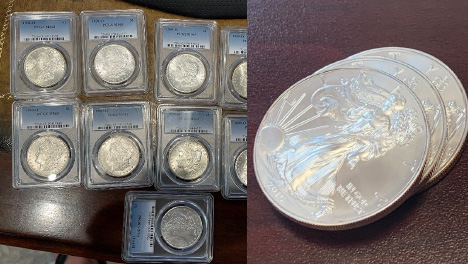Numismatic coins and bullion coins are two different types of coins that are used for different purposes.
Bullion coins are typically produced by government mints or private mints and are generally valued based on their precious metal content. They are often bought and sold for their investment value and are considered a common way to invest in precious metals. The value of bullion coins is primarily determined by the weight and purity of the metal they contain, rather than their rarity or historical significance. Bullion coins are generally sold at a small premium over the current market price of the metal they contain.
Numismatic coins, on the other hand, are valued for their rarity, historical significance, and collectability. Numismatic coins can be US coins or coins issues by other governments and most of the time they serves as money even when created as proof versions for collectors they still had face value. Numismatic coins may be gold, silver, copper, nickel or other metals and their value is not directly tied to the value of the metal from which they are made. Numismatic coins are often produced in limited quantities and may be several decades or even centuries old. The value of numismatic coins is not based solely on the value of the metal they contain, but also on factors such as rarity, condition, and historical significance. As a result, numismatic coins can be significantly more expensive than bullion coins of the same weight and material.
While bullion coins are primarily used for precious metals investment purposes, numismatic coins are often collected for their historical and artistic value. Numismatic coins can be a good investment for collectors who are interested in the history and artistry of coins, as well as their potential value appreciation. However, they are generally not recommended for investors who are primarily interested in the metal content of the coins.
